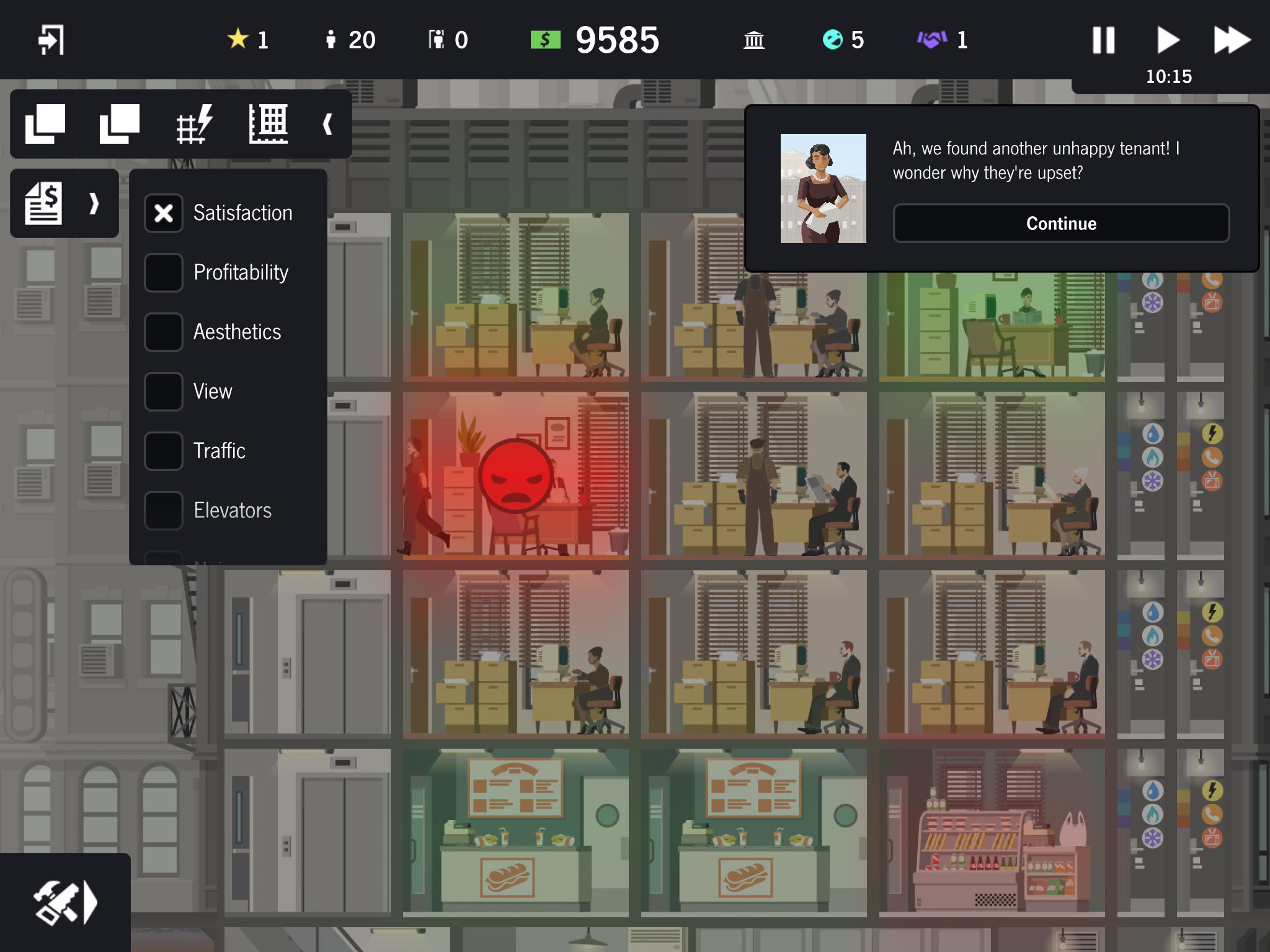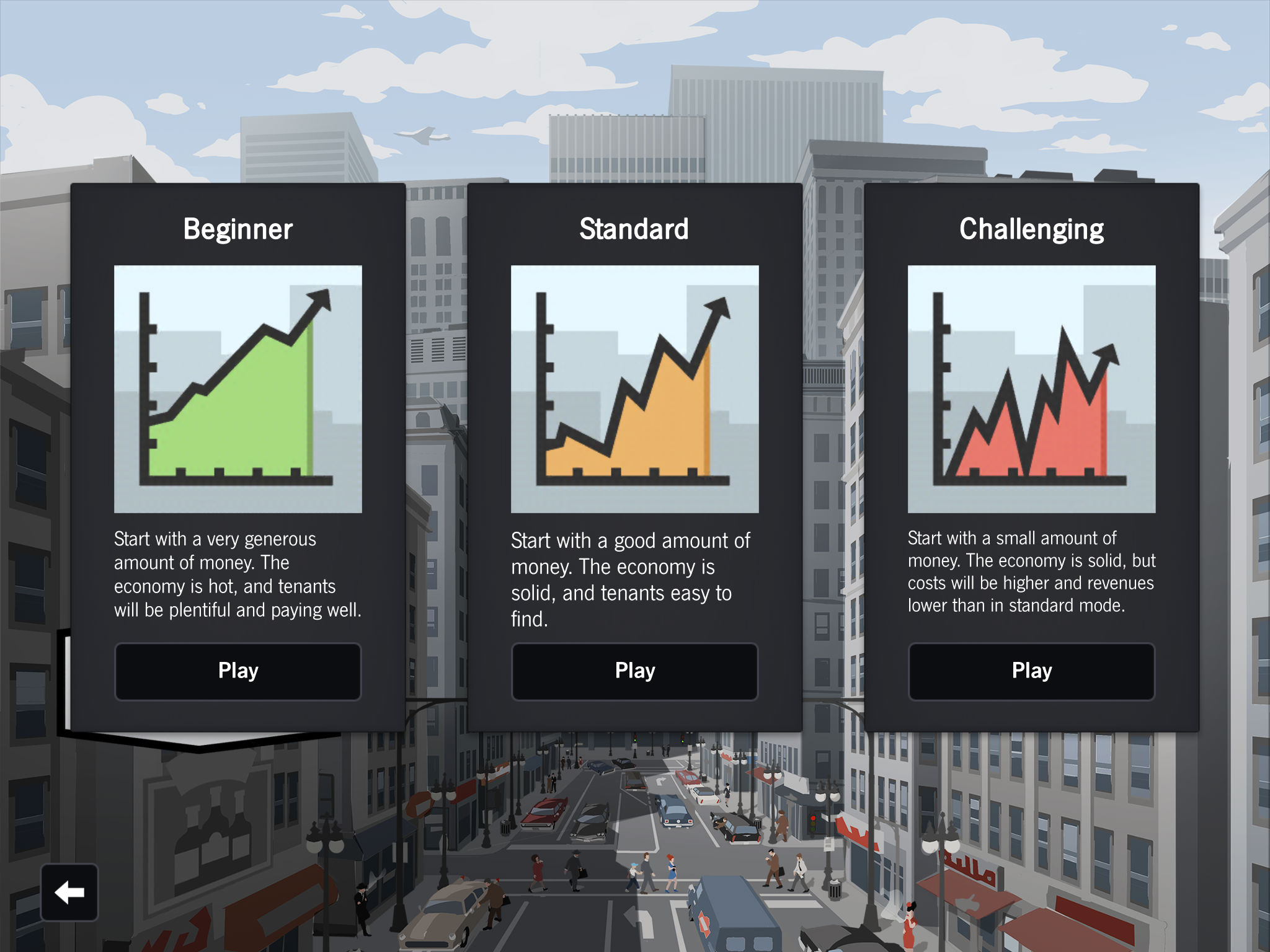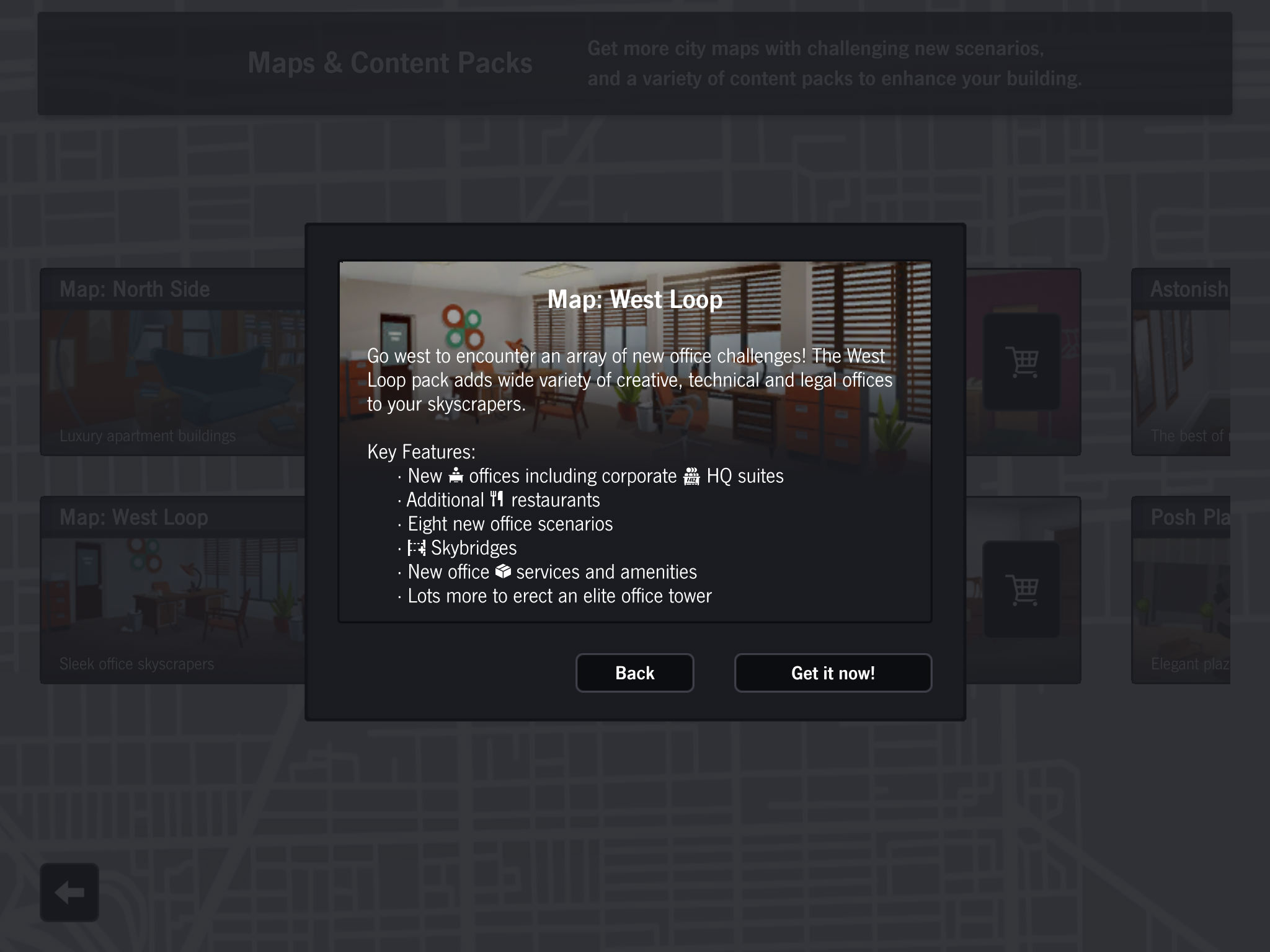When it comes to building sims, most mobile games go as big as possible. We’re talking about designing entire cities, countries, planets or what have you. It’s not that often that you get to focus in on a more micro level, but that’s exactly what Project Highrise ($3.99) has you do, zeroing in on just one building at a time and seeing if you can handle the economic and logistical challenges involved. If Tiny Tower and SimCity got together and had an offspring — which would probably involve lots of drafting paper and nothing carnal — this game would likely be the result.
Though you’re free to leap right into the sandbox mode or individual scenarios, your time in Project Highrise is best spent first going through the five short tutorials. Each one introduces a different important concept, beginning with basic construction. The interface works quite nicely on touchscreens, as you can simply tap and drag to move around your building, pinching to zoom in and out. The graphics are stylized but clean, and there’s never a time when you’re confused about what you’re seeing. A series of icons laid out in a bar across the bottom of the screen let you jump quickly to different construction options, while important information about your skyscraper is displayed at the top. Time can be sped up (something you’ll find yourself doing often) or paused with buttons in the upper-right corner.
As in just about any building sim known to man, money is a big deal in Project Highrise. You’ll start with a certain amount on hand, allowing you to expand your highrise horizontally and vertically, but the idea is to eventually have more revenue coming in each day than you are spending on upkeep. Once you have one 24-hour day under your belt, your money counter at the top of the screen will also let you know if you’re currently making a profit or in the red, which is a nice touch.
Depending on whether you’re tackling the sandbox or an individual scenario, you’ll have the option of creating an office building, an apartment complex or some combination of the two. Dual-zoned buildings allow you to play with the entire set of available tools, but it’s also more difficult because office workers and apartment tenants expect slightly different services — though there is some overlap between the two. For example, both apartments and sitdown restaurants require water lines running to them, an example of how the game walks a nice line between realism and playability.

Regardless of your building’s focus, the balancing act is similar the further you go. Fancier offices, businesses and apartments bring in more rent, but they also ask you for more specific conditions and services. Dwellers in a two-bedroom apartment might bring in a family of four, adding to your overall population and producing some nice coin, but they prefer to be on the upper floors, want the noise level to be kept down and would prefer your building had a laundry service in addition to having power and water lines. Similarly, a dentist might want to set up shop in your office building, but they’ll need a lower floor, power, water and phone lines and at least one pharmacy on hand.
Happily, you’ll have some boots on the ground in the form of construction workers (who might be robots, since they seem to be on duty 24/7, though they do eat, so who knows?) who occupy an office in the basement of your building. They’re the ones that tackle all kinds of tasks from building new floors to removing debris and making space usable again if you decide to bulldoze something, and while you can queue up any number of jobs for them at any given time, they move at their own speed and can be a little unpredictable when it comes to the order they decide to finish their work. That means it’s best not to get too ambitious, and since you can use the entire 24-hour day to do your magic, you’ll soon learn to wait until your office workers are gone for the day or your tenants are asleep to do anything major.
Perhaps the most satisfying part of Project Highrise is the way that everything works together in a logical, connected fashion. The workers in your building need places to eat, and thus patronize restaurants if you build them. Businesses do better when they have more foot traffic, but it’s possible to build public transit stops and launch media campaigns to boost it. The people in your skyscraper can sometimes be demanding, but there’s rarely a time when you won’t be able to figure out what to do to satisfy their desires. Whether you’ll have the resources to do it is another question, but that’s kind of the fun involved.

There are three different difficulty levels to choose from when starting a new game, which primarily affect the economic underpinnings of the sim. The hardest setting throws all kinds of money worries at you, including a smaller starting amount, higher costs and lower revenues. The individual scenarios offer a variety of different constraints to challenge you, things like building height limits, bans on the most basic offices or apartments, and even a layout that forces you to build two towers while keeping a park intact that sits in-between them. Once you have the basics down, however, you’ll pretty much have all the tools you need to handle any kind of weirdness you encounter.
Random events also pop up from time to time during your building management career, though the game doesn’t make it very clear that this is the case. Things like bad weather, city-wide construction and other twists can have positive or negative effects on your skyscraper which will subside after a certain amount of time has passed. Unfortunately, it’s not as easy to track the passage of time except within a single day, one of the few gripes that come to mind when dealing with the interface since nearly everything else is pretty intuitive.

The other minor annoyance is that the acts of laying out new floors, running utilities and setting up new spaces for rent — all things you’ll be doing a ton — can be a little frustrating to do precisely on the first try. It’s almost as if the game is too sensitive, and it’s definitely unforgiving. For example, when you want to run water lines across an entire floor, you need to tap where you want to start and drag all the way across in one motion, because if you lift, it’ll automatically end the line. There are also times when the pop-up info boxes obscure places you’ll want to lay things down, and you’ll end up closing out, dragging your building into a slightly different place and starting anew. These aren’t fun-killers by any means, and you’re not generally racing the clock, but you will encounter them during long sessions.

If you dig what Project Highrise is all about, there’s plenty of content for the initial purchase price to keep you building for quite some time. More scenario maps can be purchased if you still want more, bringing new structures, services and amenities to to the party, though they cost as much as the base game (and their cost isn’t clearly marked within the game, either). If you just want more cosmetic options, there are seasonal, holiday and geographic-themed packs available for 99 cents each that can scratch that itch.
What Project Highrise really does best is to occupy a bulider niche that hasn’t really been filled despite many previous games that have made the genre a mobile favorite for years. By keeping the focus tight but exploring a number of different facets within the single-building constraint, it’s a really entertaining way of proving that bigger isn’t always better. It’s the type of game that can easily have you starting to play, looking up later and seeing that way more time has passed IRL than you ever suspected, and that’s a nice compliment for any sim.
